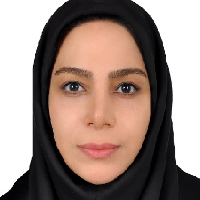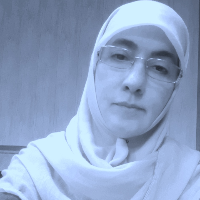A phenomenological Reflection on the Aesthetic Experience in the Contemporary Environmental Art (Case Study: The Weather Project)
The main issue of the contemporary world is the crisis regarding the climate in all of its dimensions, which also involves various aspects of natural phenomena. Aligned with the environmental issues and natural phenomena, preferred themes of contemporary art, coupled with the achievement of rejecting the art object, are related to the definition and alteration of the artwork’s presentation, the presence of the audience with the experience and understanding of the aesthetic object, along with focusing on the natural phenomena and matters concerning them. By discovering the limits of artwork’s presentation and by broadening its definition of them, contemporary art has established the possibility of perceiving them in terms of experience in the form of three-dimensional installation beyond the horizon of sensory experience and in a tangible connection with the material world. On the other hand, addressing the social problem is a mission that contemporary art pursues pragmatically, in the dimension of biological concern, and by relying on making its dangers tangible for the audience. Therefore, contemporary art is a wide area for choosing social themes with a focus on sensory perception and perceptual forms for the audience. The knowledge of philosophy, which seeks to explain the essence of all phenomena, while studying any kind of them and their description, along with the manner in which they appear in the time and place which the knower perceives, focuses on the appurtenances of the perception of phenomena using a phenomenological approach; meanwhile, Mikel Dufrenne’s reading of phenomenology is to elucidate the object and cognitive aesthetic experience (understanding the aesthetic object through experience) and aesthetic perception in art. According to Dufrenne, the perception of aesthetic experience in art is drawn on three levels: pure physical presence, representation (mostly as imagination); and feeling (leading to expression). The description of the experience of the work of art in this reading is important for the reading of the works of contemporary art, which creates the possibility of sensory experience for the audience, in that it focuses on the experience of the object and the experience of the observer as a cognitive aesthetic experience. Since phenomenology, in philosophical terms, focuses on the experience and perception of the world, and its dependent components in contemporary works of art are rediscovered by the audience through renewed understanding and in an interactive and experimental way. According to this reading, the object and aesthetic experience are inseparable, and with the presence of the audience based on sensory experience, the cognitive aesthetic experience becomes possible, and through that, the inclination to deal with natural phenomena in contemporary art can be explained. By relying on the study of the weather qualities and using humidification devices, the weather project by Olafur Eliasson in the space of Turbine Hall, immersed in a thin fog, which, together with the sun, is reflected at the end of the hall by hundreds of single-frequency yellow lamps that are installed in the form of a semi-circle behind a semi-transparent semi-disc, which creates a new understanding of the category of weather with the illusion of being close to the sun and the sky, so by suspending the lived experiences, stimulates the visualization of presence in the time situation and redefines the place, and changes the audience’s attitude towards living in the world.The first stage of the phenomenology of aesthetic experience in Dufrenne’s terms is the stage of presence, which includes sensory presence. In the experience of the work of art, presence is as a body, and artistic awareness is as a perception of the body. The weather project, which was presented in the form of an installation, by benefiting from the atmospheric qualities that are basically perceived with the body, is inclusively based on the presence and perception through the physical senses of the audience (phenomena includes the senses of touch, smell, and sight and activates them), and the meeting of the work of art and the body is the starting point of the artistic perception of this work. Therefore, by adapting the way of presenting the work in the form of installation, focusing on the position of the audience in contemporary art, and identifying and applying the aesthetic object in Dufrenne’s reading, which insists on the observer’s experience, the weather project provides both the fulfillment of the stage of presence and identification of the aesthetic object. Therefore, the aesthetic object in the weather project is the very same principle of the formation of the work of art, which is the atmospheric qualities and representations of natural phenomena.The second aspect of Dufrenne’s aesthetic perception is reappearance or representation or imagination; which is called the intermediate representation between presence and reflection, which mainly appears in the form of imagination. In the weather project, the atmospheric condition in time and place is represented in a fixed way that everyone is facing (time is created based on the light and the representation of the sun and the presence of fog, and the perception of the color of the light determines the specific moment for the audience and the spatial representation is provided by visualizing the proximity of the sun and the expansion of the place by means of a mirror that increases the size of the surfaces, and on the other hand, creates a situation of reflection). In fact, it is the creation of memories of fog, along with humidity and yellow light, which evoke London air pollution with the centrality of Tate Modern for the audience, and despite the absence of pollution in the hall, the memory of being in such an atmosphere is predicted for them.In the third stage, the process of perception proceeds with reflection, feeling, and organizing the imagination, which dialectically and simultaneously leads to an aesthetic experience. In the weather project and through a phenomenological process, the spectator has the opportunity to see their reflection in the ceiling mirror to perpetuate the memory of air pollution; In the weather project, the audience apart from daily life and by suspending the assumptions they feel about the weather is presented with the opportunity to experience the representation quality. The audience’s action (in the form of feeling) is actually a response to the process of experiencing the aesthetic object as if the mirror reflection is the completion of the perception process in the aesthetic experience, which is an empathetic approach in response to the image of the audience in the mirror in dealing with atmospheric phenomena and spatial and temporal location. Therefore, according to the phenomenological aspects of environmental settings, the work of art will never be complete until the spectator experiences and interprets its specific qualities; and its effectiveness will take place through physical perception, and eventually, reflection on it.The result is that the weather project, by creating an unmediated reminder of the weather, objectifies the time and place, which is the evolution of the state of the public in the urban space as a collective matter, and the visitors ultimately experience the aesthetic object with an emotional and reflective quality, following an empathetic approach. Therefore, the recent approaches of artists in raising awareness about the environment (in line with the increasing growth of biological crises) are the use of phenomenological approaches in the perception of nature; since this genre tries to put the audience back in the experienced space, so they could get a deeper understanding of ontological qualities of natural phenomena (as they are), and to understand the current situation and their own relation to it in the form of redefining the physical totality of the natural world and uncertainty. [1] This article is based on the first author's Postdoctoral research project entitled "Critical Approach of Contemporary Art to Environmental Justice" at Iran National Science Foundation, Tehran, Iran.
- حق عضویت دریافتی صرف حمایت از نشریات عضو و نگهداری، تکمیل و توسعه مگیران میشود.
- پرداخت حق اشتراک و دانلود مقالات اجازه بازنشر آن در سایر رسانههای چاپی و دیجیتال را به کاربر نمیدهد.




